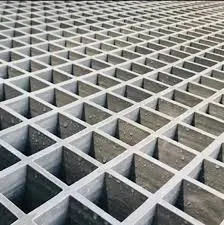
-
 Afrikaans
Afrikaans -
 Albanian
Albanian -
 Amharic
Amharic -
 Arabic
Arabic -
 Armenian
Armenian -
 Azerbaijani
Azerbaijani -
 Basque
Basque -
 Belarusian
Belarusian -
 Bengali
Bengali -
 Bosnian
Bosnian -
 Bulgarian
Bulgarian -
 Catalan
Catalan -
 Cebuano
Cebuano -
 China
China -
 China (Taiwan)
China (Taiwan) -
 Corsican
Corsican -
 Croatian
Croatian -
 Czech
Czech -
 Danish
Danish -
 Dutch
Dutch -
 English
English -
 Esperanto
Esperanto -
 Estonian
Estonian -
 Finnish
Finnish -
 French
French -
 Frisian
Frisian -
 Galician
Galician -
 Georgian
Georgian -
 German
German -
 Greek
Greek -
 Gujarati
Gujarati -
 Haitian Creole
Haitian Creole -
 hausa
hausa -
 hawaiian
hawaiian -
 Hebrew
Hebrew -
 Hindi
Hindi -
 Miao
Miao -
 Hungarian
Hungarian -
 Icelandic
Icelandic -
 igbo
igbo -
 Indonesian
Indonesian -
 irish
irish -
 Italian
Italian -
 Japanese
Japanese -
 Javanese
Javanese -
 Kannada
Kannada -
 kazakh
kazakh -
 Khmer
Khmer -
 Rwandese
Rwandese -
 Korean
Korean -
 Kurdish
Kurdish -
 Kyrgyz
Kyrgyz -
 Lao
Lao -
 Latin
Latin -
 Latvian
Latvian -
 Lithuanian
Lithuanian -
 Luxembourgish
Luxembourgish -
 Macedonian
Macedonian -
 Malgashi
Malgashi -
 Malay
Malay -
 Malayalam
Malayalam -
 Maltese
Maltese -
 Maori
Maori -
 Marathi
Marathi -
 Mongolian
Mongolian -
 Myanmar
Myanmar -
 Nepali
Nepali -
 Norwegian
Norwegian -
 Norwegian
Norwegian -
 Occitan
Occitan -
 Pashto
Pashto -
 Persian
Persian -
 Polish
Polish -
 Portuguese
Portuguese -
 Punjabi
Punjabi -
 Romanian
Romanian -
 Russian
Russian -
 Samoan
Samoan -
 Scottish Gaelic
Scottish Gaelic -
 Serbian
Serbian -
 Sesotho
Sesotho -
 Shona
Shona -
 Sindhi
Sindhi -
 Sinhala
Sinhala -
 Slovak
Slovak -
 Slovenian
Slovenian -
 Somali
Somali -
 Spanish
Spanish -
 Sundanese
Sundanese -
 Swahili
Swahili -
 Swedish
Swedish -
 Tagalog
Tagalog -
 Tajik
Tajik -
 Tamil
Tamil -
 Tatar
Tatar -
 Telugu
Telugu -
 Thai
Thai -
 Turkish
Turkish -
 Turkmen
Turkmen -
 Ukrainian
Ukrainian -
 Urdu
Urdu -
 Uighur
Uighur -
 Uzbek
Uzbek -
 Vietnamese
Vietnamese -
 Welsh
Welsh -
 Bantu
Bantu -
 Yiddish
Yiddish -
 Yoruba
Yoruba -
 Zulu
Zulu
frp flange and blind
Understanding FRP Flanges and Blinds Applications and Benefits
Fiber Reinforced Plastics (FRP) have revolutionized many industries, particularly those dealing with harsh environments where traditional materials often falter. Among the myriad applications of FRP, the use of FRP flanges and blinds has gained significant traction, particularly in sectors like chemical processing, wastewater treatment, and oil and gas. This article delves into the features, advantages, and applications of FRP flanges and blinds, providing a comprehensive overview of their role in modern engineering solutions.
What Are FRP Flanges and Blinds?
FRP flanges are mechanical components used to connect two piping systems together. They feature a flat, circular piece with holes drilled around the perimeter for bolting to corresponding flanges on the other pipe. The benefit of using FRP in these applications lies in its lightweight composition and resistance to corrosion—attributes that traditional metals or plastic counterparts may struggle to match.
On the other hand, FRP blinds, also known as blind flanges, serve as covers for the ends of piping systems. They are crucial in maintenance and safety protocols, ensuring that any unfitting, repairs, or inspections can be executed without spilling or leaking hazardous substances. Like their flange counterparts, blind flanges offer the same durability and chemical resistance synonymous with FRP.
Advantages of FRP Flanges and Blinds
1. Corrosion Resistance One of the standout properties of FRP materials is their exceptional resistance to corrosion. This feature makes FRP flanges and blinds particularly well-suited for use in environments where they will be exposed to aggressive chemicals, moisture, and varying temperatures.
2. Lightweight Compared to metal alternatives, FRP is significantly lighter. This not only makes for easier installation but also reduces the load on supporting structures in piping systems.
3. Durability FRP offers impressive mechanical strength, which contributes to the longevity of the components. When properly maintained, they can withstand extreme conditions without succumbing to wear and tear.
4. Thermal Insulation Unlike metal, FRP has lower thermal conductivity, providing better thermal insulation properties. This can be particularly advantageous in applications where temperature control is crucial.
frp flange and blind

5. Cost-Effectiveness Although the initial investment in FRP components can be higher, the long-term savings from reduced maintenance, fewer replacements, and energy costs due to insulation properties make them a cost-effective choice over time.
Applications of FRP Flanges and Blinds
FRP flanges and blinds find applications in various industries, including
- Chemical Processing The corrosive nature of many chemicals involved in industrial processes necessitates the use of components that can withstand such conditions without degradation. FRP's resistance to chemical action is invaluable in these scenarios.
- Water and Wastewater Treatment In water treatment facilities, FRP components are preferred due to their ability to resist corrosive elements found in both treated and untreated water.
- Oil and Gas The extraction and transportation of oil and gas often occur in harsh environments where traditional materials can fail. FRP flanges and blinds can provide the necessary durability and resistance to ensure seamless operations.
- Pulp and Paper Industry The harsh conditions in the pulp and paper industry require components that can handle chemicals and high levels of moisture. FRP flanges and blinds serve efficiently in such applications.
Conclusion
As industries continue to seek materials that can enhance efficiency and durability while maintaining safety standards, FRP flanges and blinds emerge as a formidable option. Their unique properties allow them to perform in environments where metal counterparts might not thrive, thus playing an essential role in modern engineering applications. In conclusion, leveraging the advantages of FRP components can lead to improved performance, reduced maintenance costs, and increased safety across various sectors, further solidifying their place in the future of infrastructure development.









